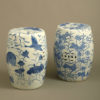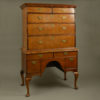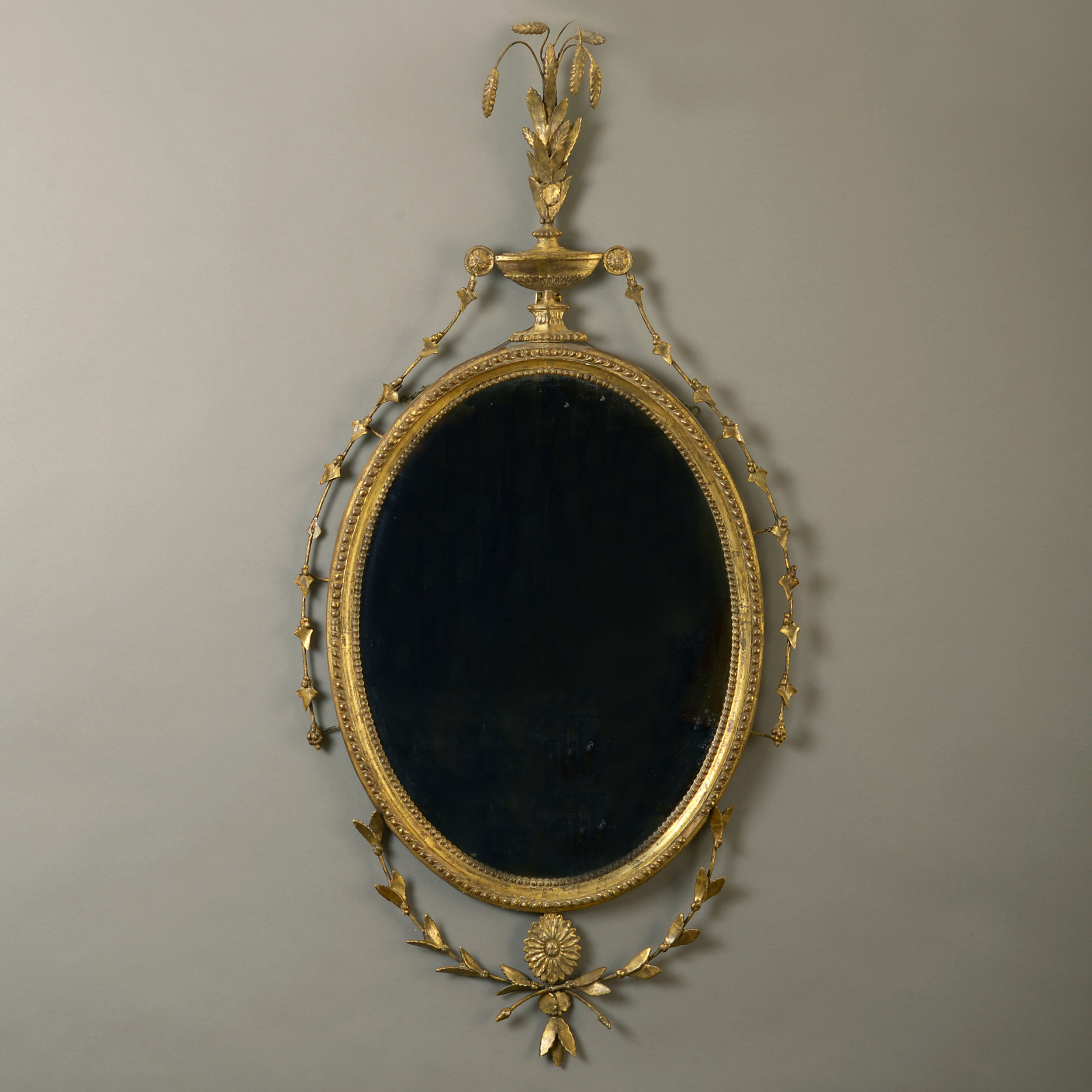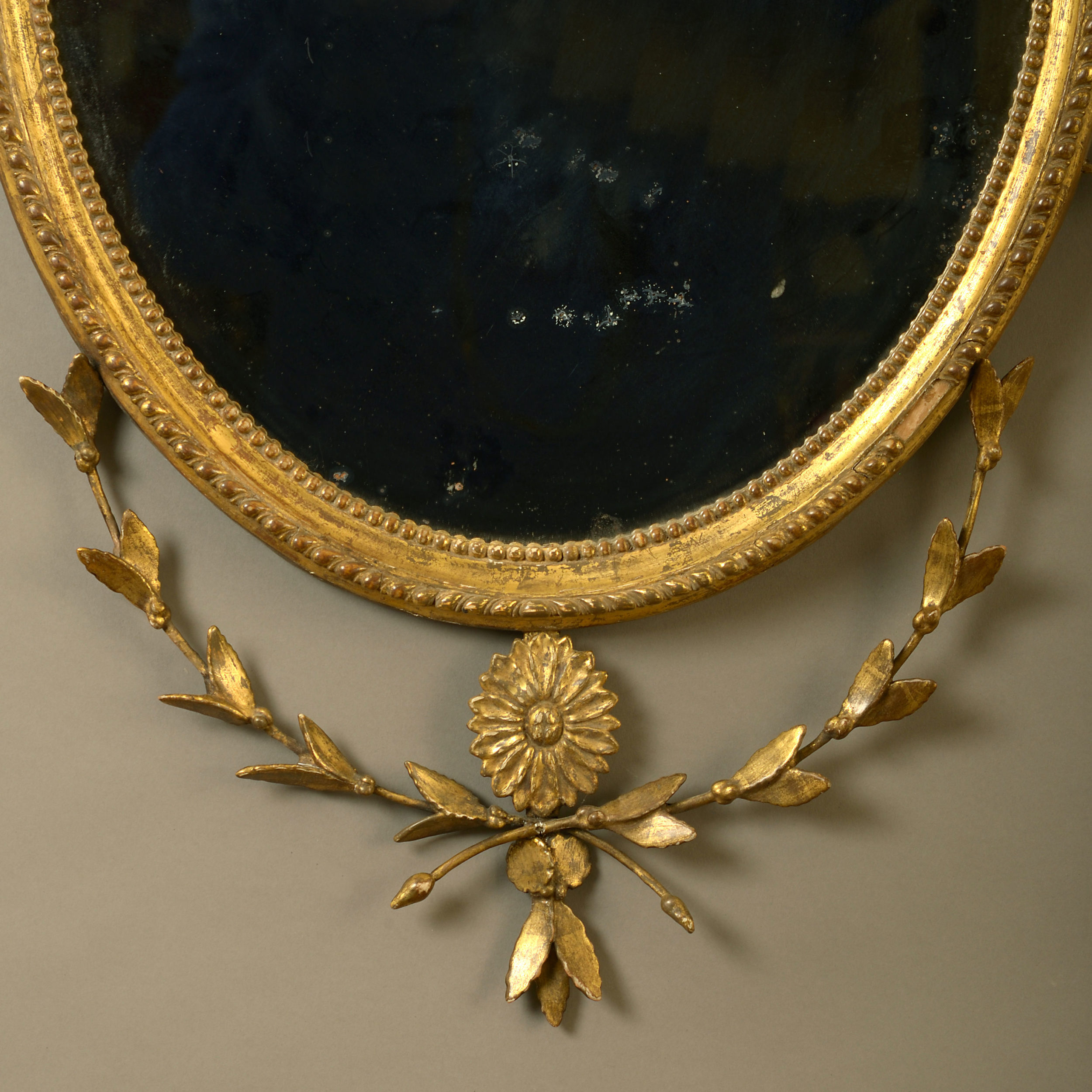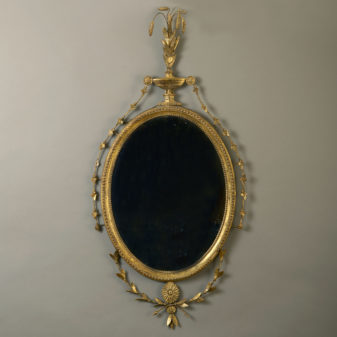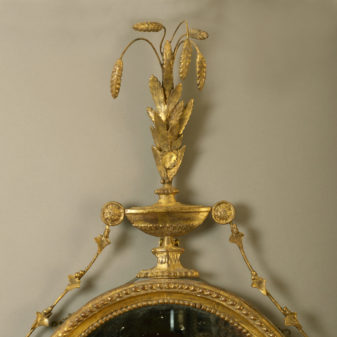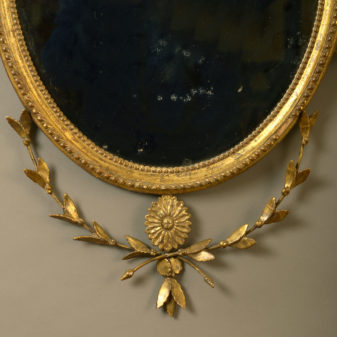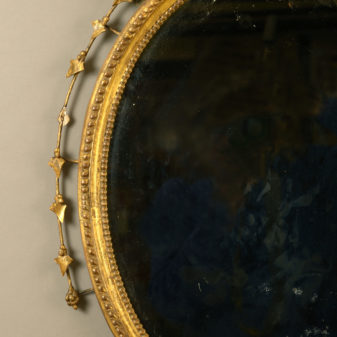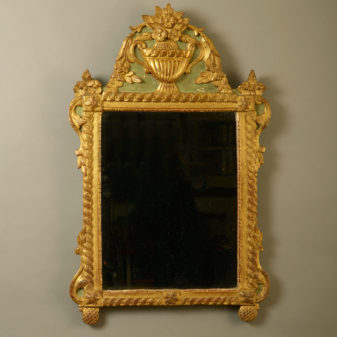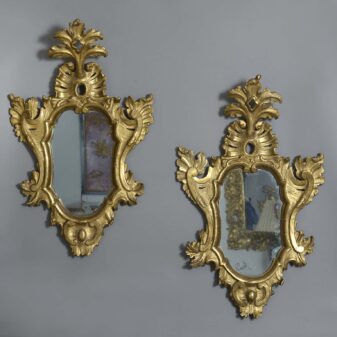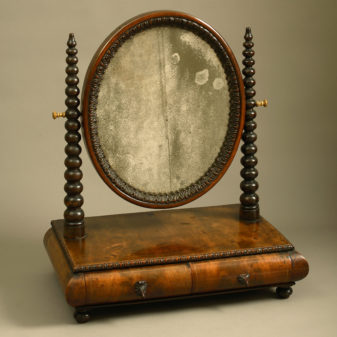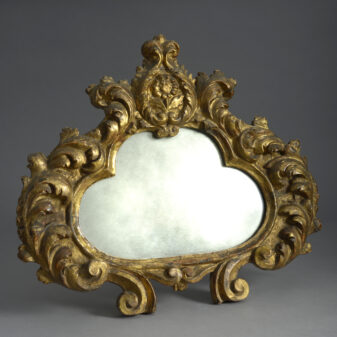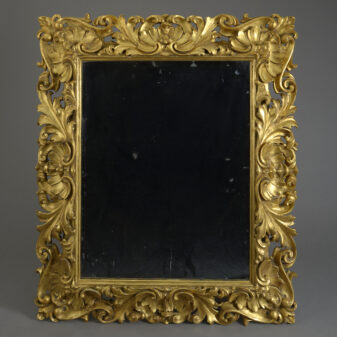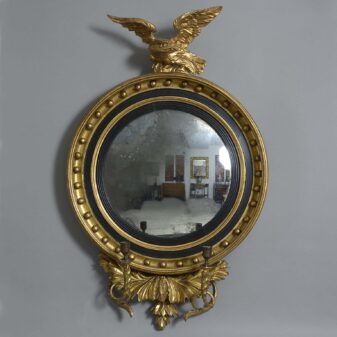Circa 1780 England
A Late 18th Century George III Adam Period Oval Giltwood Mirror
£3,500
SOLD
Height 41 inches (104.14 cm)
Width 20 inches (50.80 cm)
Depth 2 inches (5.08 cm)
A fine late 18th century George III Period carved oval giltwood mirror in the Adam taste, having a gadrooned frame, surmounted with a classical urn and wheat sheafs, the sides and base with foliate decoration. Retaining the original mercury plate.
Robert Adam was a Classical architect, furniture designer and interior designer born on the 3rd of July 1728 in Kirkcaldy, Fife. He was the second son to the foremost Scottish architect of his time, William Adam.
William, who was Master Mason to the Board of Ordnance in North Britain supervised the design of military buildings, also designed numerous country houses in a conservative Palladian style.
Robert Adam assisted his father, William, on such projects as the rebuilding of Invararay Castle and extensions to Hopetoun House as well as William’s position as Master Mason. Along with his older brother, John, he took on the family business after his father death in 1748. He left for Rome six years later to study architecture under Charles Louis Clérisseau and Giovanni Battista Piranesi which kept him on the continent for almost five years in total. In 1759 he returned to Britain and began a practice in London with his youngest brother, James.
Robert Adam rejected the Palladian style later as ‘ponderous’ and ‘disgustful’ and went on to develop a new style of architectural decoration, one which was more archaeologically accurate than past classical revivalist styles; but nonetheless innovative and not bound only by ancient precedents. In Works in Architecture, co-authored with his brother James, the brothers stated that Graeco-Roman examples should ‘serve as models which we should imitate, and as standards by which we ought to judge.”
The Adam brothers’ success can also be attributed to a desire to design everything down to the smallest detail, ensuring a sense of unity in their design. In Adam interiors, all the furnishings were custom designed to accord with the decoration of the room in a unified harmony. Often the carpets were woven to match the intricate patterns of the ceiling above, while every fitting including sconces, mirrors, and doorknobs also received a custom design emulating the motifs of the room. This can be seen in the classical urn and wheat sheaf motifs on the mirror above with foliate decoration.

